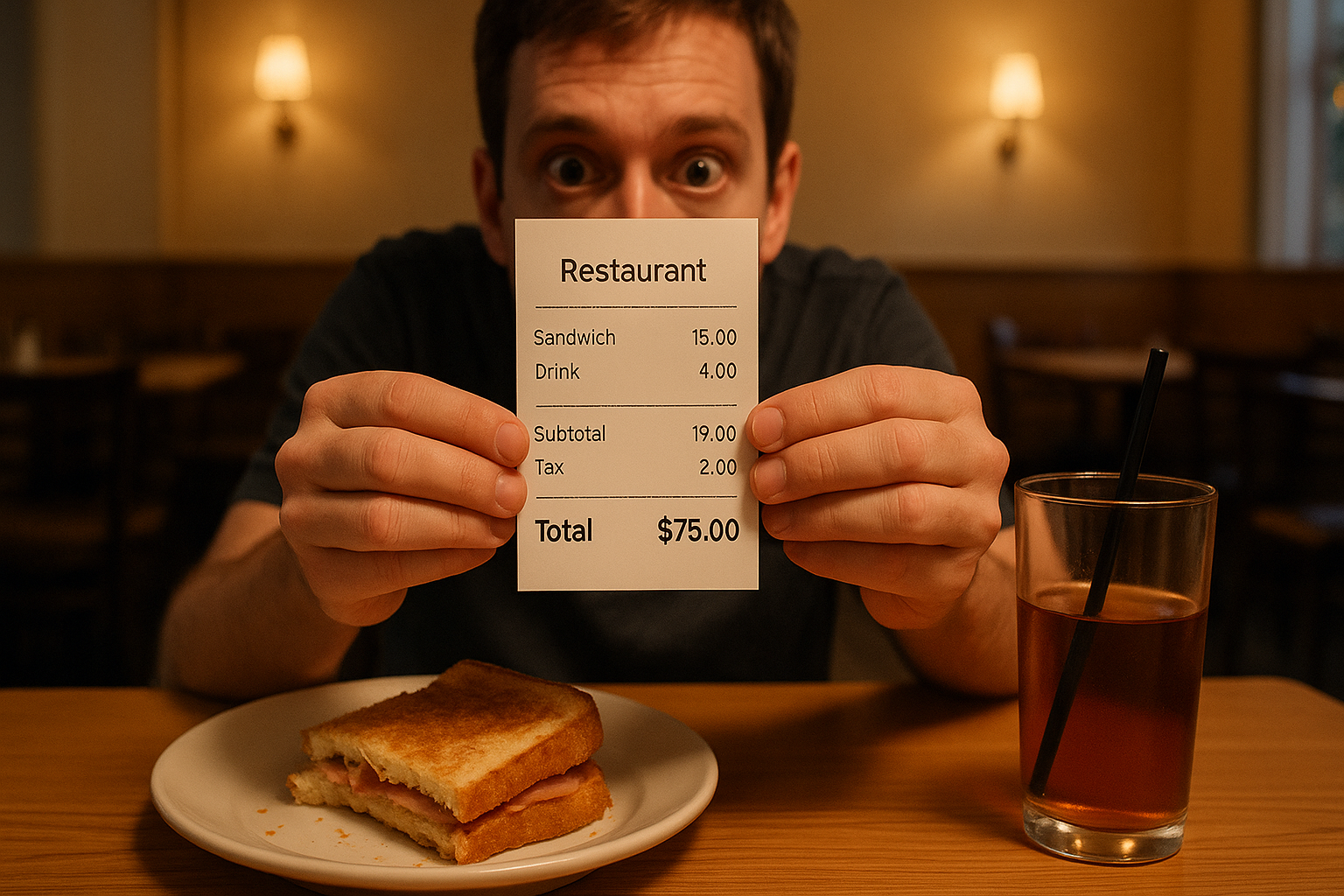Eating out in America isn't just getting expensive—it's becoming downright painful. Restaurant prices have shot up a jaw-dropping 21% since 2021, racing ahead of general inflation in ways that make your average dinner tab look like a car payment.
I've been watching this restaurant price explosion with a mix of professional interest and personal dread. What used to be a casual decision—"Let's grab lunch"—now requires the kind of financial calculation once reserved for appliance purchases. Do I really need this $8 sandwich, or should I just eat the leftovers in my fridge?
The culprits? A three-headed monster of beef, coffee, and egg inflation leading the charge. But that's just the appetizer to this economic meal.
Look, McDonald's—America's fast-food barometer—is struggling with decade-low sales growth. When the Golden Arches start wobbling, something serious is happening in American dining.
"We're experiencing unprecedented input costs across the board," a restaurant owner in Chicago told me last week, gesturing toward his half-empty dining room. "And there's only so much we can pass on to customers before they just... stop coming."
The problem runs deeper than just food costs (though those are bad enough). It's a layered crisis—like a very expensive onion.
First layer: those commodity prices. Coffee regions got hammered by climate disruptions. Egg producers battled avian flu outbreaks. Beef prices reflected both skyrocketing feed costs and processing bottlenecks that never fully resolved after the pandemic.
But the real meat of the problem? Labor costs.
The pandemic fundamentally reshuffled restaurant employment. Many workers simply walked away, deciding that minimum wage plus uncertain tips wasn't worth the hassle anymore. (Can you blame them?) Restaurants had to respond by—gasp—actually paying people more.
Then there's rent. Commercial real estate hasn't exactly been giving discounts, particularly in the high-traffic areas where restaurants need to operate. Add soaring energy costs for running those commercial kitchens, and you've got a recipe for serious margin pressure.
Having covered the restaurant industry since before the pandemic, I've never seen operators this stressed about their basic business model. One restaurant consultant I speak with regularly calls it "the great margin squeeze of the 2020s."
What we're witnessing is essentially a massive experiment in price elasticity. How much will people tolerate before they just eat at home? Early data suggests we're approaching that ceiling—restaurant traffic is showing weakness across nearly every segment.
The smarter restaurants are responding with menu engineering—subtly reducing portion sizes, substituting cheaper ingredients, or highlighting higher-margin items. It's an age-old restaurant tradition, but one with limits before diners catch on and revolt.
Meanwhile, the home cooking renaissance continues. Grocery inflation, while still annoying, runs notably below restaurant inflation. The gap between eating out and eating in hasn't been this wide in recent memory, creating genuine financial incentive to dust off those cookbook skills.
For investors (and I'm not offering advice here, just observation), this raises interesting questions about which chains might weather this storm. Those with strong brand loyalty probably have more pricing power than undifferentiated competitors. Companies that invested early in automation technologies might maintain better margins.
The broader economic implications deserve consideration too. Restaurant spending often functions as a canary in the consumer spending coal mine. When people pull back from dining out, they're typically reconsidering other discretionary purchases as well.
McDonald's situation particularly fascinates me. This is a company engineered for efficiency and scale—the absolute masters of the fast-food universe—and even they're feeling the pinch. Their attempt to balance price increases against customer traffic is becoming a high-wire act with no net.
"It's Economics 101," as one franchise owner told me, "when costs rise faster than you can raise prices, margins get squeezed."
And that value menu? It doesn't look so "value" anymore. Those fries that somehow cost more than the entire meal did a few years ago tell the whole story.
The restaurant industry has weathered tough times before, but this combination of pressures represents a genuine existential challenge for many operators. In the coming months, we'll likely see more menu adjustments, concept pivots, and unfortunately, closures among those who simply can't make the math work anymore.
For now, dining out in America has become the new luxury experience—though not by design. And that $15 salad? It's looking more like a financial decision than a lunch choice.
